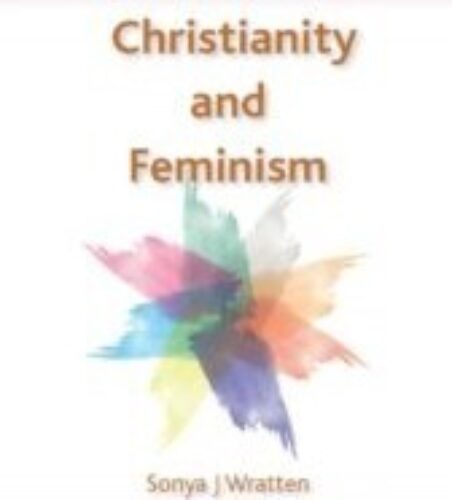Christianity and Feminism, part 2
Saturday 2nd October 2021
A discussion of the second half of Sonya Wratten's book Christianity and Feminism, which is available as a PDF download from the PCN website.
We started with the question: Is there any point to using female imagery to portray Christ? We looked at images of the female Christ to be found online. We were not impressed by these. Many seemed over-sexualised. So what would be the value of thinking of Christ in female terms - Christa?
R pointed out that while Jesus was a distinct historical person who was a man, there is also the risen Christ which she felt is not gendered. M said that Jesus represented humanity and that gender a such was not the issue. She felt feminism was a worldly issue not a spiritual one. E said that for her, God was neither male or female.
'A' said that the value of Christa might depend on what you believe Christ represents - is Christ pointing to the nature of God or does Christ embody God in human form. Wratten claims that Jesus’ male gender might make it more difficult for a woman to feel Jesus offers salvation. This wasn’t a problem for the women present at our meeting but H didn’t rule out the possibility that for a woman with bad experiences of men, it could be. She welcomed a range of images to represent the Christ. She thought it important because different races and cultures may need to create a Christ in their own image.
N distinguished between gender and sex. Gender, she said, is a pattern of behaviours. We are all more or less feminine and masculine in our behaviour. She felt attracted to a God who possesses feminine traits like gentleness and building relationships. She found Christa an attractive concept – a God who is expressed in feminine traits. H thought Jesus, though a man, does express femininity and valued women’s company. R said Jesus rejected toxic masculinity and showed men an alternative way of being male. She thought it a pity that the church has elevated his maleness while ignoring other factors such as his age. For example, the church reserved the priesthood for men while it never said they had to be under 33.
H agreed that Christians should fight for the rights of women. 'A' asked how this applied between different faiths where attitudes to women are different? R saw the burka as evidence that the patriarchy is very strong in Islam. This mind-set allows women to be blamed because they can be considered to have ‘aroused’ men by being uncovered. She thought that it is fair to critique Muslims for this but not to prescribe how they should behave, because Christian’s don’t possess the moral high ground here. H said it was a paradox that Muslim women often talk of being liberated by the hijab because they like not being sexualised.
H asked what makes men violent towards women.
R described the ‘boys will be boys’ tolerance of aggressive behaviour, the stereotypical toys that the two sexes are given – guns and dolls. She wanted Christians to call out male aggression and the sexist jokes.
M spoke of her children being given non-stereotypical toys – a doll for the boy, a bus for the girl – yet neither was played with. The stereotypical traits always seem to emerge. We weren’t sure if it was innate or learned. N said there has been a turn for the worse among some groups. Social media had fuelled disrespectful stereotyping and challenging sexist attitudes among boys. But at the same time other young people have taken on board the equality and respect messages.
N, who has experience of family therapy, thought that the trend towards gender equality had led some men to grow frustrated – they feel more insecure, they don’t have a way with words as many women do and so the question arises of how they will respond under stress. When they feel they are denied their rights – it becomes a recipe for abusive behaviour. She agreed that Christians should call out sexist and abusive behaviour, especially where it has become normalised.
Hand M thought it possible that feminism has caused some men to grow insecure. They noted that churches tend to have more women and women’s groups. In some churches women are dominant.
R quoted a source as saying “Equality will always be viewed as oppression by those who are in the positions of power.” It may be necessary to tip the numbers in favour of women in order to say to the upcoming generation of girls that equality is an achievable goal. She felt that everyone should have the opportunity to live out their personality. E agreed that after a history of oppression there is a need to continue to elevate women.
'A' spoke of women possessing a sense of sisterhood which is not repeated in his experience of men. He felt jealous of women for having that. N spoke of the sole man in the playground waiting for his child after school and how isolated that can feel among the ‘sisterhood’ of mothers. While men have their equivalent ‘down the pub’, she said the conversation in such groups is very different from women’s, less empathetic.
R made the last comment. For feminism to win it is not about men losing. There are aspects of masculinity which are damaging to men.


